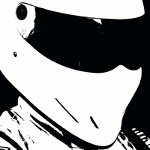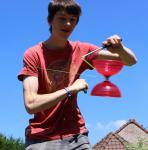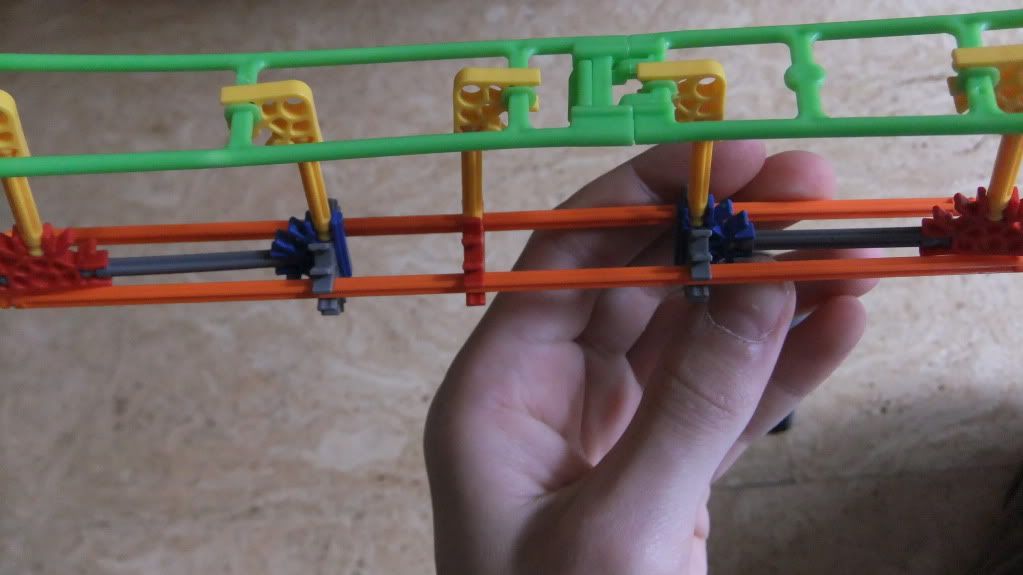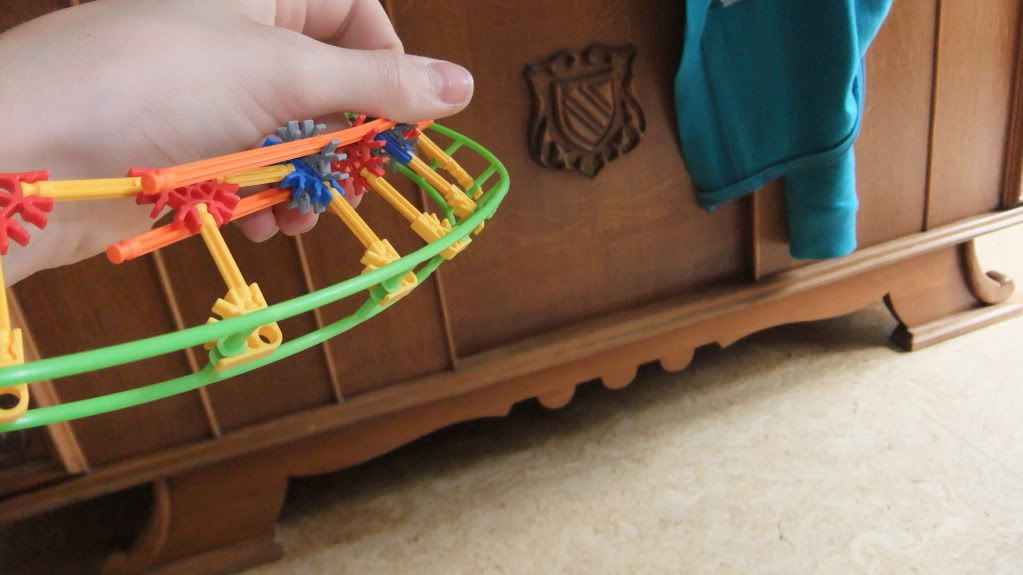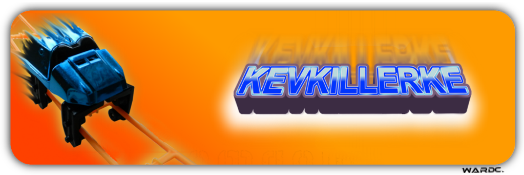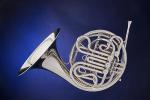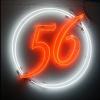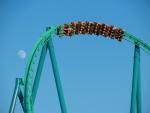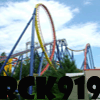*DP*
TRACK TO TUBE CONNECTIONSTrack to tube connections are the base for building any tube-supported coaster. This is the method that I use:



The "hinge" makes the connection adjustable. This is important for getting the right angle for your track when it connects to the support. The top can also rotate to allow the connection to work with a variety of different positions. You can also rotate the base of the connection by moving the green one-way connectors on different rods of the tube. This comes in handy when you want to eliminate roll or pitch. The "hinge" will only swivel perpendicular to the position of the yellow rod.
CONNECTING TUBESConnecting tubes are important for making more complex tube structures. Although there is a great number of ways to do this, let's take a look at the basics:
There are two ways to set it up:


Keep in mind that no matter which option you choose,
one of your tubes will always be free to rotate. The trick is to have the tube that
doesn't rotate to act as your main support for your track.

^ Here you can see that I've chosen the lateral, blue tube to be able to rotate. Why? Because even if the tube rotates, it wouldn't affect structural stability. And it still provides excellent strength.
However, there is a way to eliminate tube-rotation altogether. You can do this by using cross-braces.

In this picture, I've attached two tubes to one by using a 3-D half-moon connector in place of a regular half-moon. Again, this structure was created by starting with the same tube connections.

This picture shows the track connections and tube connections working together in one tube-structure.
FOOTERSFooters are just as important (maybe even more) than track and supports. Your footers are what keeps your tubes firmly on the ground and keeps them from shaking. Without them, the entire structure of the coaster would be too weak no matter how strong your tubes were.
Although footers, like tubes, vary in size or shape depending on the situation, here is the basic footer that I use:

At the base is a circle of small black rods, this keeps the other rods from slipping. No, this isn't absolutely necessary for every tube, but it is essential for large tubes. I will usually use these for tubes that are 3 orange rods or longer, or at the bottom of a pull-out.
For vertical tubes, it's important to connect them to an upper-base. If this were a real coaster, it would be where the tube meets the ground. Everything under it is considered below ground-level. Here is the method that I use to connect vertical tubes at ground-level:

This is what keeps your tubes upright when trying to place track. It also adds strength to your support structures.
So, what if your tubes meet the ground at an angle?
It's a common problem that will happen a lot.
The footers for tubes are always the same. However, just like with tube-connections, the support will always "hinge" in one direction. The trick here is to connect the footer to a rod so it stays flat on the ground. Sometimes this will require you to change your base, or move your green one-ways to other rods of your tube.

In any tube structure, I will generally have
at least one vertical support.
STRUCTUREYour coaster is a machine. It runs on gravity, and produces energy.
The key to making an effective structure is to distribute that energy into the ground. For every action, there is a complete and opposite reaction.

This is a picture of a structure for a large helix. Notice that two red rods have been replaced by four yellow rods with a ladder connector. This set-up enables the tube to intersect the base. And if you're reading this soon after I've posted it,
surprise! The blue arrows represent the direction the energy will be traveling, and how it is dispersed into the structure.
The train puts energy into your track, which is absorbed by your supports, and distributed into your base.
CONCLUSIONSo we've covered the basic techniques and disciplines of making a tube-supported VV coaster. Please remember that this guideline isn't a complete manual for coaster building. A great coaster can only come from great ideas and effort. This guide was created as a 'basic strategy tutorial' that I have developed from experience. Credit goes out to Bballer247 for his amazing track spine. And to Gump & MP thrill rides for their tutorial and perfection of tube supports.












